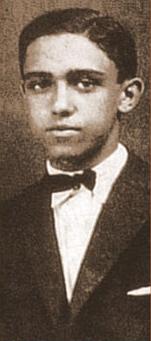Oscar Niemeyer was a Brazilian architect considered to be one of the key figures in the development of modern architecture. Niemeyer was best known for his design of civic buildings for Brasilia, a planned city that became Brazil's capital in 1960, as well as his collaboration with other architects on the headquarters of the United Nations in New York.
Early life
Niemeyer was born in the city of Rio de Janeiro on December 15, 1907.After graduating, he worked in his father's typography house. Even though he was not financially stable, he insisted on working in the architecture studio of Lucio Costa, Gregori Warchavchik and Carlos Leao, even though they could not pay him.

Young Oscar
What inspired him
Niemeyer, an inspiration to generations of young Brazilian architects, is best known for designing most of the civic and government building of Brasilia, including the Roman Catholic Cathedral that earned him the 1988 Pritzker Architecture Prize.
He began working as an architect in the 1930s and was influenced by the work of Le Corbusier, although he claimed to be more interested in free-flowing curves than straight lines and modelled a number of his buildings around the figure of a woman's body.

What movement he was part of?
His contact with Costa would be extremely important to his maturation. Costa, after an initial flirtation with the Neocolonial movement, realized that the advances of the International Style in Europe were the way forward for architecture.
How the public felt
In 1953 modern Brazilian architecture, which had been praised since Brazil Builds, became the target of international criticism, mainly from rationalists.Max Bill attacked Niemeyer's use of free-form as purely decorative.
His work
The Ministry of Education had assumed the task of shaping the "novo homem,
Brasileiro e moderno" (new man, Brazilian and mordern). It was the first state-sponsored modernist skyscraper in the world, of a much larger scale than anything Le Corbusier had built until then. Completed in 1943, when he was 36 years old, the building that housed the regulator and manager of Brazilian culture and cultural heritage developed the elements of what was to become recognized as Brazilian modernism.